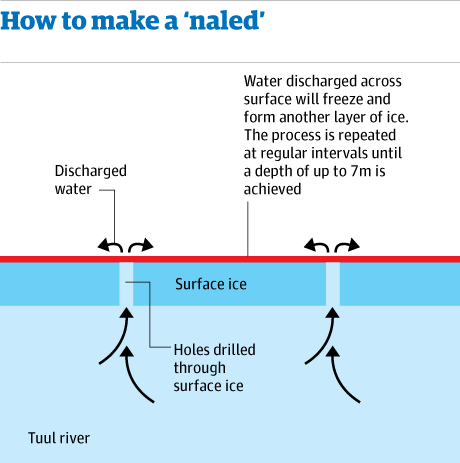Specifically, the idea of the project is to
artificially create “naleds”.
Naleds are thick slabs of ice that naturally can be found in far northern areas
when rivers push through cracs in the surface to seep outwards during the day
and then add an extra layer of ice during the night. Through this process these
layered ice slabs continue to grow in thickness as long as there is enough
water pressure to penetrate the surface. Due to their thickness of more than 7
metres they melt much later than regular ice.
 |
| image source |
The climate manipulating project tries to
recreate this process by drilling bore hole into the ice that has started to
form on the Tuul river. The water will be discharged across the surface adding
a new layer of ice on top. The drilling will then be repeated at regular
intervals throughout the winter.
Robin Grayson, a
Mongolian-based geologist argues that "if you know how to manipulate them,
naled ice shields can repair permafrost and building cool parks in
cities."
While naleds have served industrial
applications before, as military bridges in North Korea or as platforms for
drilling in Russia, the Ulan Bator climate experiment is unprecedented.
This giant project lines up with other huge
climate manipulation projects like the rain
control operation for the Olympics by the Beijing
Weather Modification Office.
0 comments:
Post a Comment